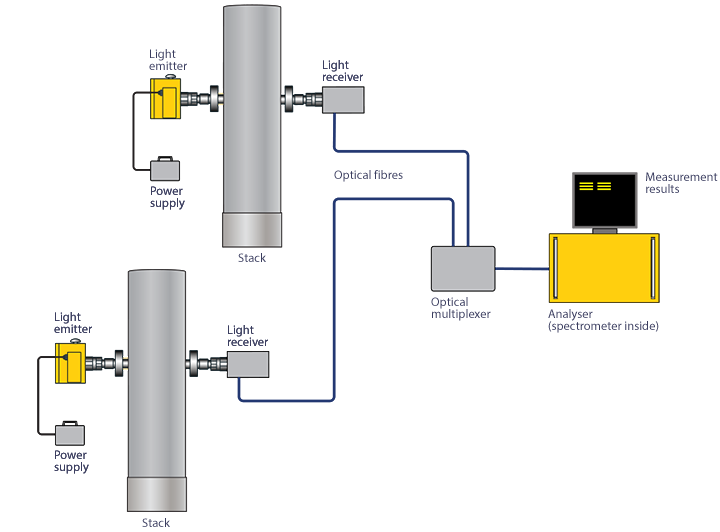2019-02-28
Multiplexed Monitoring – To be Doubt or Not?

There are several types of continuous emissions monitoring (CEM) systems. The technical designs may be very different, but they usually have a few things in common. The instruments providing the measurement results do not come cheap, and the systems require maintenance. However, if monitoring is to be done in more than one gas duct, then there might be a way to save costs, multiplexing.
The traditional system type used in CEM is an extractive system. A probe is inserted in the gas duct (stack), and a pump conveys a continuous flow of sampled gas from the probe, through tubes (sample lines), and to and through a measurement cell in the instrument. Multiplexing is possible by means of valves allowing gas from two or more sample lines to flow into the instrument, in sequence. The instrument output is a sequence of results corresponding to the different stacks.

However, this type of multiplexing also introduces a notable uncertainty. The systems may show “memory effects”. An obvious effect owes to the time it takes to transport a “fresh” gas sample from the stack to the cell in the instrument. Further, the inner surfaces of the sample lines as well as the measurement cell can be contaminated by gas from the preceding stacks, which then mixes with, or otherwise affects, the gas from the new stack. Doubts arise if the output from the instrument actually corresponds to the gas concentration at the intended stack, or a mix of two (or more) stacks.
An alternative to a sampling system is an in-situ system. No sample is extracted but the gas concentrations are measured by optical absorption along a light path inside the stack. An optical fibre leads remaining light to an analyser where it is analysed and the gas concentrations are calculated. Multiplexing is possible by allowing light from more than one stack to reach the analyser in sequence. However, this is optical multiplexing, not gas multiplexing. There are no memory effects since light travels with…, well, the speed of light, and there is no such thing as “optical residue” left from the preceding stacks.

OPSIS is a leading supplier of in-situ CEM systems. The systems have very competitive costs-of-ownership, which only become even more competitive when the systems utilize optical multiplexing. And when using a multiplexed CEM system from OPSIS, there is no doubt that the monitoring results represent the gas concentrations at the respective stack.
